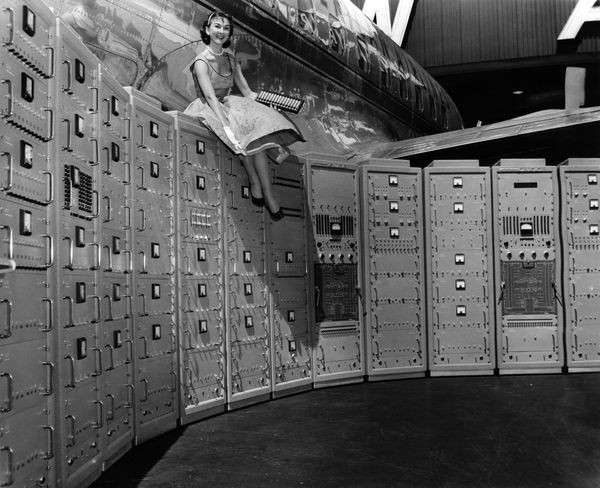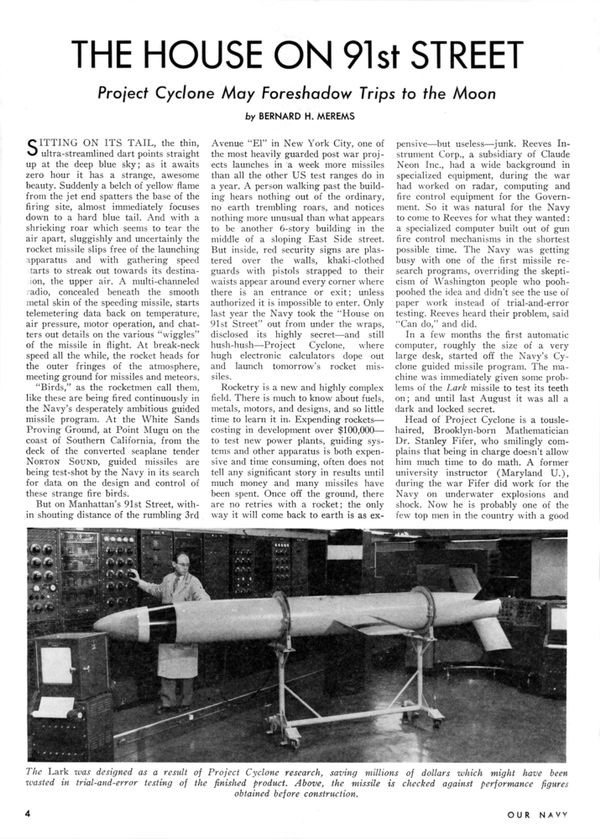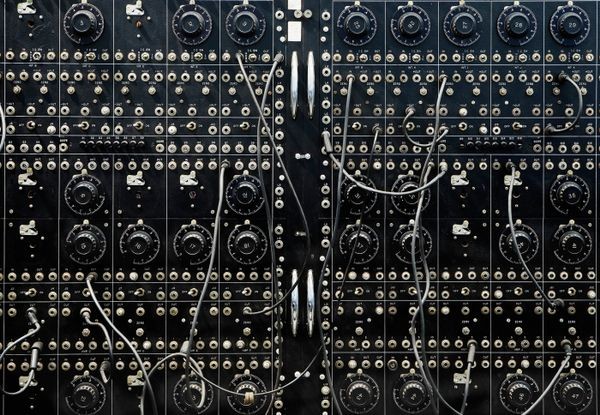Analog Goes Electronic
Beckman computer at the San Francisco airport
Aerospace firms were the earliest customers for large electronic analog computers. This 60-foot-long Beckman Instruments EASE analog computer was shipped from San Francisco to Indianapolis where the Allison division of General Motors used it to design jet engines.
Analog Goes Electronic
The analog computer’s evolution from mechanical to electronic began during World War II. The innovation brought greater computing speed, although that didn’t always make electronic analog computers better than their mechanical forebears.
Nonetheless, by the 1950s electronic machines had largely replaced mechanical. Companies began producing diverse models, and electronic analog computers remained a bedrock of engineering and scientific calculating for a generation.
REAC brochure
Reeves Instrument was one of the earliest firms to offer fully-assembled, electronic analog computers.
View Artifact DetailHitting the Target
During World War II, Germany’s V-2 rockets heralded the arrival of a frightening new weapon. The missiles used an op-amp analog computer for their onboard guidance systems, though they still proved too inaccurate to be a serious military threat.
America, recognizing the potential of guided rocketry, launched Project Cyclone immediately after the war. Funded by the U.S. Navy, Project Cyclone used the Reeves Electronic Analog Computer (REAC) developed by Reeves Instruments to simulate, develop, and test guided missile systems.
A commercial version of REAC soon followed, with more than 60 installed by 1950.
The House on 91st Street
After the U.S. Navy revealed its Project Cyclone in 1950, this article highlighted the unassuming location of Reeves Instrument’s missile modeling computer.
View Artifact DetailGeneral Precision Systems' General Purpose Analog Computer
This vacuum tube-based analog computer solved complex mathematical equations by using varying electrical voltages instead of 1s and 0s like a digital computer. In science and engineering, analog computers model a large range of real-world phenomena, like missile trajectories, spacecraft design, economic policies, and even flight simulation. By the 1970s, digital computers displaced them, offering precision, reproducibility, and versatility that analog technology could not match.
View Artifact Detail


